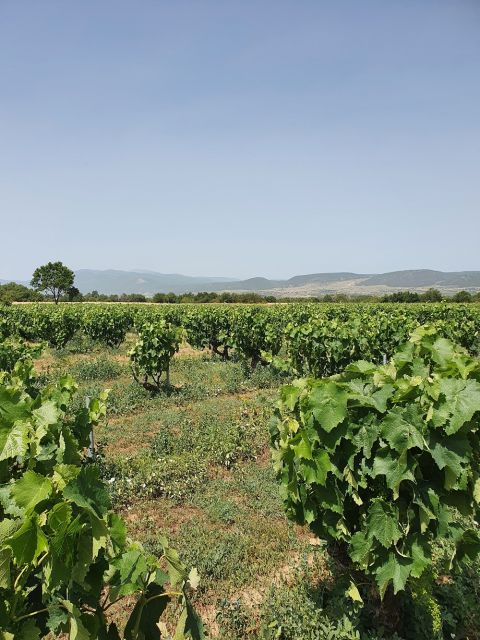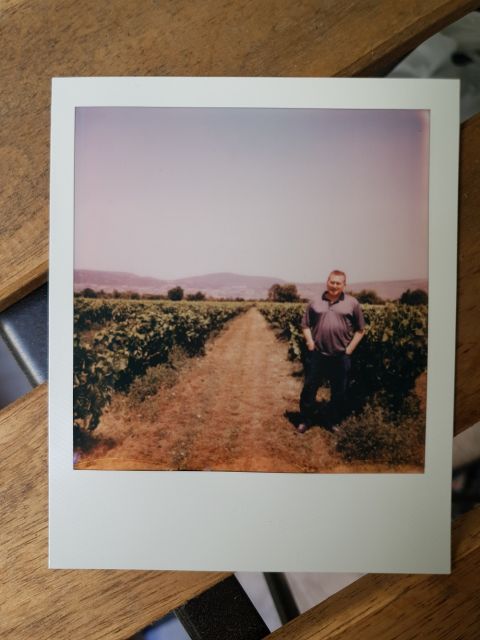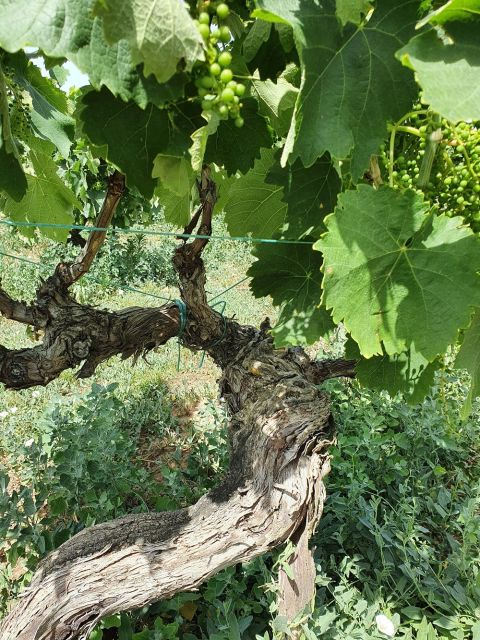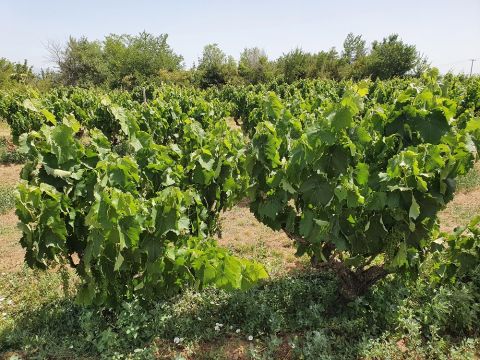WWC21 – Barba Yannis, Greece

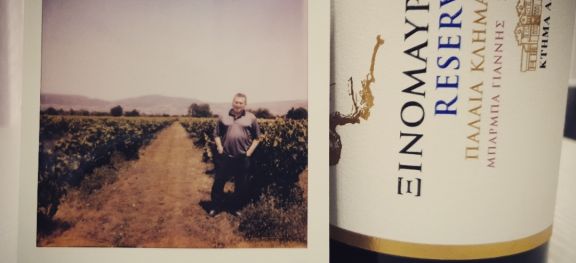
'Hello. My name is Savvas Kyriakidis and I am a wine wonk by chance. I studied Journalism and Mass Communications in Aristotle University of Thessaloniki, and my passion for wine and everything about it was created spontaneously a couple of years ago, when I decided to extend my knowledge while working in the hospitality sector. I am currently studying for my WSET Diploma exams, dividing my time between gaining wine knowledge, and trying to share it and the love for wine, with my customers in the restaurant I work at.' See our WWC21 guide for more old-vine competition entries.
It’s an oxymoron how a country with a winemaking history of thousands of years, could still struggle for recognition and cachet, attracting just in the recent years some of the attention it deserves. This oxymoron of course, will be explained by “Barba Yannis” and the story that has to recount.
Amyntaion is one of the most famous wine regions in Greece, at least for the Greeks. The wine making history of the zone goes back to 2700 BC, with ancient pots for must conservation from that era and loppers from the Hellenistic period being discovered by archeological excavations in the area.
Until 1912 the region was a part of Ottoman Empire for more than 400 years, and was called Sorovich from the Turkish words “sor” which means “ask” and “geçmek” that means “pass”, with the Roman road “Via Egnatia” running through the area in the 2nd century BC, as did the railway from Constantinople (Istanbul) to Monastir (Bitola) in the late 19th century, proving that the district was at a location of great significance for centuries. The wines of the region were still at that time highly respected for their quality, with Spyros Melas, a journalist and writer, mentioning on page 295 of his book “The wars of 1912-1913”: “Leaving Koliatsi we walked to Sorovich, a town blessed by Bacchus, once in great prosperity. There, the best vines of Macedonia grow, as locals claim, and one that drinks wine of Sorovich can never forget it”.
The area was liberated in November 6 of 1912 during the First Balkan War, after a fierce battle between Ottomans and Greeks, that resulted to the almost complete devastation of the land from the losing side, before they retreated. The story of “Barba Yannis” plot, begins seven years later, as vines of Xinomavro, the most important red grape variety of Northern Greece, were planted in 1919 in gobelet, a system used by Greeks since ancient times, in an effort for the revival of the – now Greek – region.
Just in the age of three, in 1922, “Barba Yannis” witnessed the Asia Minor Catastrophe, that resulted to mass population movements and the arrival of refugees in the area, who struggled to survive and adopt, setting back the revival effort.
In July 19 of 1928, before “Barba Yannis” complete the first decade of its life, Sorovich was renamed to Amyntaion. According to Stavroula Kourakou, the “Great Lady” of Greek wine, the name was given after Amyntas of Arrabeus, a general of Alexander the Great, who also descended from King Amyntas III, grandfather of Alexander the Great.
During this period, phylloxera that appeared in Greece in 1898, had already devastated almost the entire vineyard area of Macedonia. “Barba Yannis” plot managed to survive the curse of the vines, as the soil in the vineyard is 60-85% sandy, with clay and loam over limestone conglomerates, creating an environment where the bug is unable to thrive. In the years that followed, “Barba Yannis” spread its roots deep in this blessed soil, now reaching even 23 meters in search of nutrients that are so frugally provided.
The teenage and adolescence of “Barba Yannis” were far from lighthearted and blithe. During the Second World War, the German Nazis occupied the area and applied extremely oppressive living conditions for the citizens of Amyntaion. In the turbulent newer history of Greece, immediately after the end of World War II, a civil war followed, leading the raddled population to impoverishment. Survival became a priority, and young Barba Yannis, the owner of the plot, was cultivating his vineyard selling the grapes for winemaking and the production of tsipouro, a traditional grape spirit so important for the area, that feasts dedicated to it are taking place every year up until now.
In 1959 the first winemaking cooperation of northern Greece was founded in Amyntaion with the aim of financially supporting local grape growers, and Barba Yannis reshaped his vineyard to linear, in order to maximise the production and his profit, earning a living for his family for the decades that followed, that were free of ructions and ticked away almost peacefully.
2003 was the year that Barba Yannis closed his eyes for the last time, and unfortunately all his stories and life memories in the vineyard were gone with him. But that was also the year that winemaker Angelos Iatridis and viticulturist Makis Mavridis of Alpha Estate acquired his vineyard from his descendants, and decided to reanimate the ravaged plot and name it “Barba Yannis” (uncle John) in his memory.
It took no less than six years for “Barba Yannis” to reach the desired quality levels, as Aggelos Iatridis admits. During this time vines were again reshaped back to gobelet, with Iatridis and Mavridis using significant knowledge and resources in order to lead the vines reaching their full quality potential. After 2009, “Barba Yannis” was kind of reborn, as the new era began.
Now “Barba Yannis” (40°40'45.88"N, 21°41'35.93"E) is actually a 102-year-old teenager. A plot of 3,71ha at an altitude of 647m with northwestern exposure, in the most continental zone of Greece. The climate is moderated by the presence of two lakes, Petron and Vegoritida, the remainings witnessing that the entire area was covered by water hundred thousand years ago. The ungrafted vines of “Barba Yannis” produce Xinomavro grapes that are hand harvested in 15kg picking baskets and the yields are as low as 26 hL/ha after green harvest and selection that provide top quality fruit. The sublime and iconic Vieilles Vignes Reserve Xinomavro wine produced by the grapes of “Barba Yannis” have earned 19 points from Julia Harding MW, and countless awards in recent years.
“Barba Yannis” is probably the best proof that old vines should be considered a heritage as important as the history of a nation. Even of a nation that despite its unstable past, can look to the future with optimism, through the eyes of visioners like Iatridis and Mavridis, and bring up to present the magic of the past. Like a polaroid photo…
The photos are provided by Savvas Kyriakidis.
Become a member to view this article and thousands more!
- 15,404 featured articles
- 274,499 wine reviews
- Maps from The World Atlas of Wine, 8th edition (RRP £50)
- The Oxford Companion to Wine, 5th edition (RRP £50)
- Members’ forum
- 15,404 featured articles
- 274,499 wine reviews
- Maps from The World Atlas of Wine, 8th edition (RRP £50)
- The Oxford Companion to Wine, 5th edition (RRP £50)
- Members’ forum
- Commercial use of our Tasting Notes
